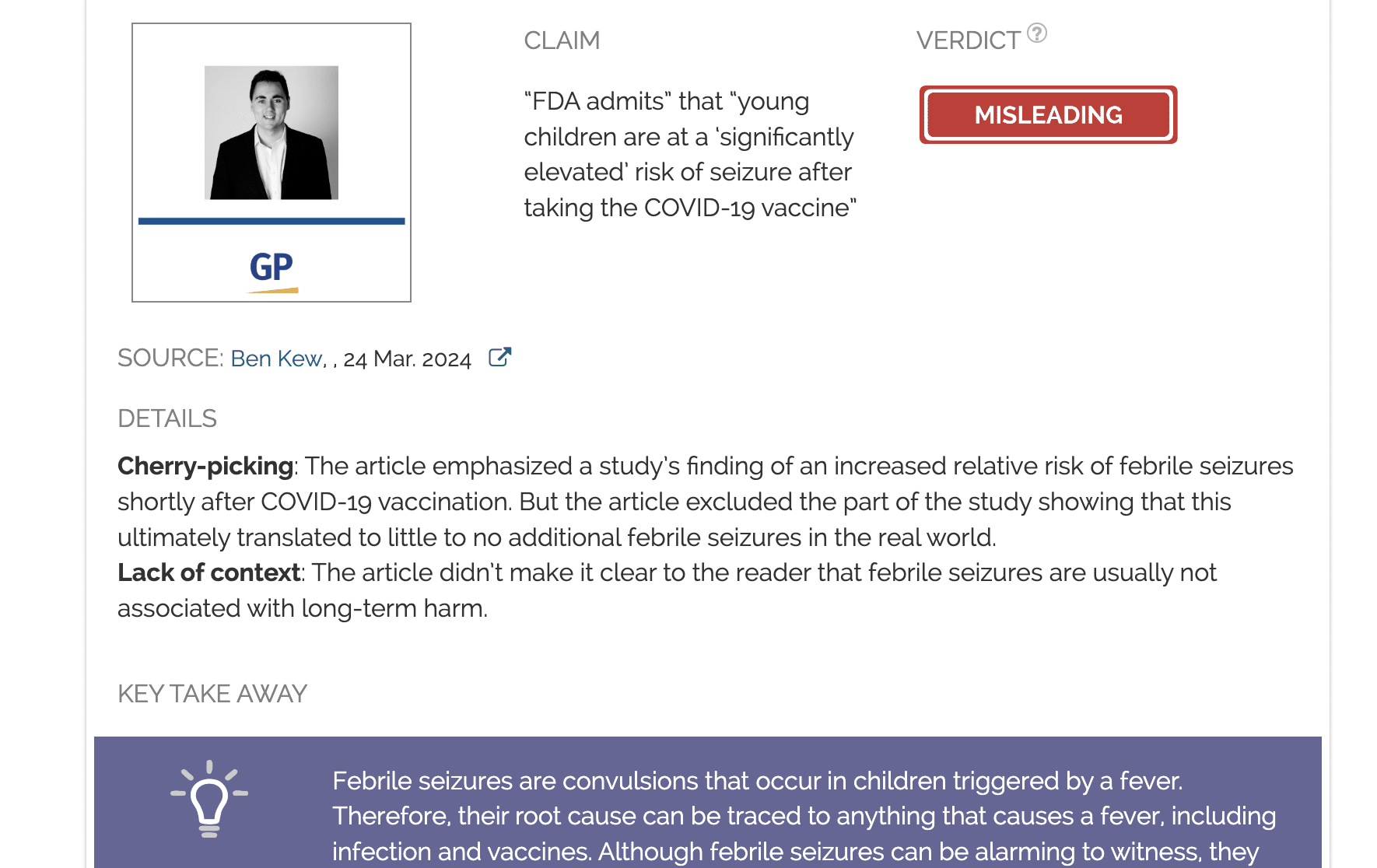- Health
More deaths occurred in 2020 than in previous years; Johns Hopkins student article compared proportion of deaths per age group, which can obscure changes in raw numbers
Key takeaway
The U.S. has recorded more than 200,000 excess deaths (about 300,000 according to the latest CDC data) from all causes in 2020 compared to the average number of deaths in previous years. Excess deaths in 2020 have also been observed in all age groups, ranging from young adults to the elderly.
Reviewed content
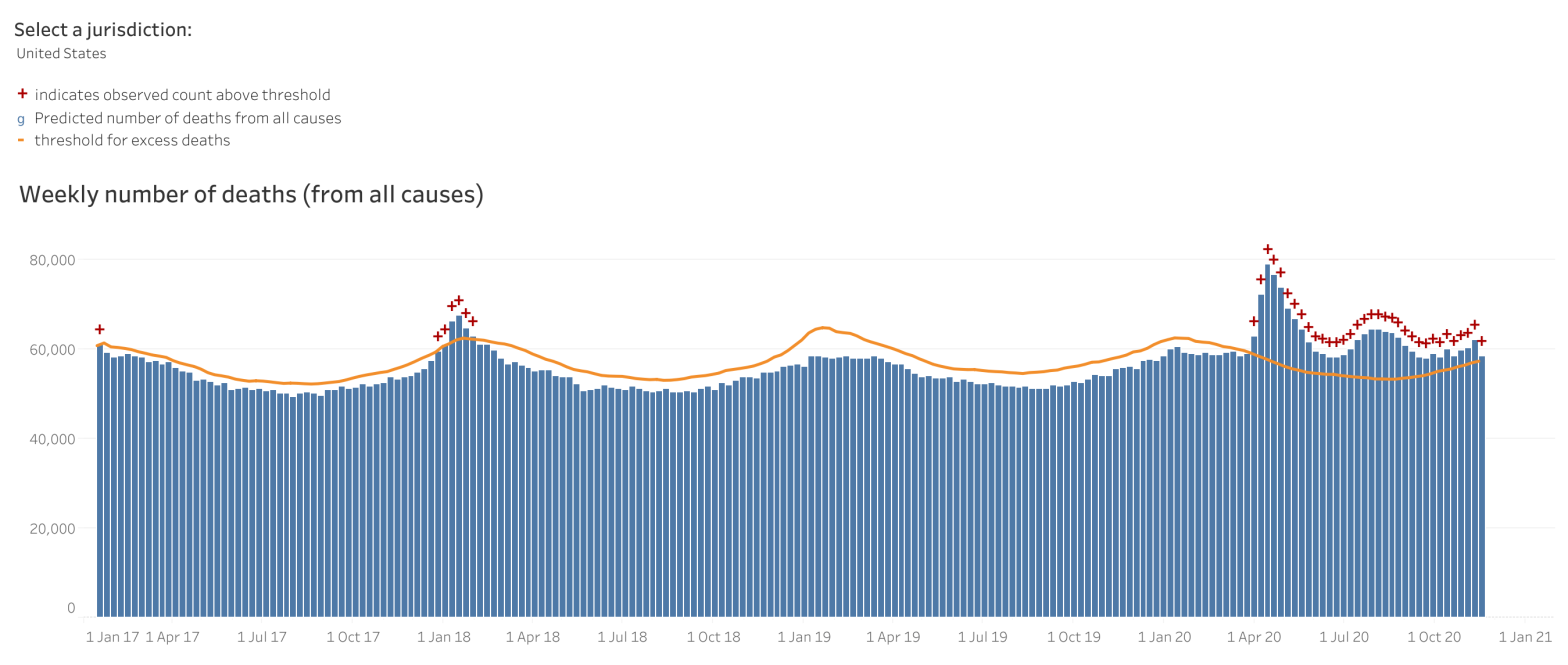
Verdict:
Claim:
“Johns Hopkins study mysteriously disappears after it revealed, in spite of COVID, no more deaths in 2020 than in prior years”
Verdict detail
Inaccurate: Firstly, the study the claim refers to was not a scientific study, but instead an article published in a student newsletter at Johns Hopkins University. Secondly, the claim that no excess deaths have occurred in 2020 is false. Data from the U.S. CDC clearly shows that the number of deaths in 2020 is higher than that of previous years, most likely as a result of the COVID-19 pandemic.
Full Claim
“Johns Hopkins study mysteriously disappears after it revealed, in spite of COVID, no more deaths in 2020 than in prior years”; “Using statistical analysis, a senior lecturer from Johns Hopkins University (JHU) has demonstrated that COVID-19 has resulted in no excess deaths, yet the university has censored the article online.”; “A few days ago Johns Hopkins published a study saying corona is [no big deal]. They then deleted it.”
Review
Several articles published at the end of November 2020, such as this one by LifeSiteNews and this one by the Gateway Pundit, claim that a “Johns Hopkins study” showed no excess deaths in the U.S. due to COVID-19, and that the study was deleted shortly after it was published. These articles went viral on Facebook and have received more than 31,000 total interactions on the platform, according to the social media analytics tool CrowdTangle.
The claims are inaccurate. Firstly, the basis for this claim is not a scientific study, but an article in the Johns Hopkins News-Letter, a student publication from Johns Hopkins University. The article, which was published on 22 November 2020, is a report on a presentation by Genevieve Briand, the assistant director for the Masters program in Applied Economics at Johns Hopkins University. Briand’s fields of study are microeconomics and econometrics; however, she has no expertise in infectious diseases or epidemiology.
Secondly, the article’s report that Briand’s analysis showed no increase in deaths compared to previous years, based on data from the U.S. Centers for Disease Control and Prevention, is inaccurate. Briand had attempted to examine whether the pandemic had led to an increased amount of deaths by comparing changes in the proportion of deaths among different age groups from early February to early September 2020. However, this method obscured the increases in the raw number of deaths, because more deaths can occur without any marked changes in the proportion of deaths among different age groups. As the Editor’s Note appended to the article explains:
“Briand presented data of total U.S. deaths in comparison to COVID-19-related deaths as a proportion percentage […] an increase in excess deaths is not represented in these proportionalities because they are offered as percentages, not raw numbers.”
Indeed, simply comparing the total number of deaths in 2020 so far to that of previous years shows a clear increase in deaths (Figure 1). And a CDC report estimated that between late January and October 2020, there were more than 299,000 excess deaths in the U.S.[1].
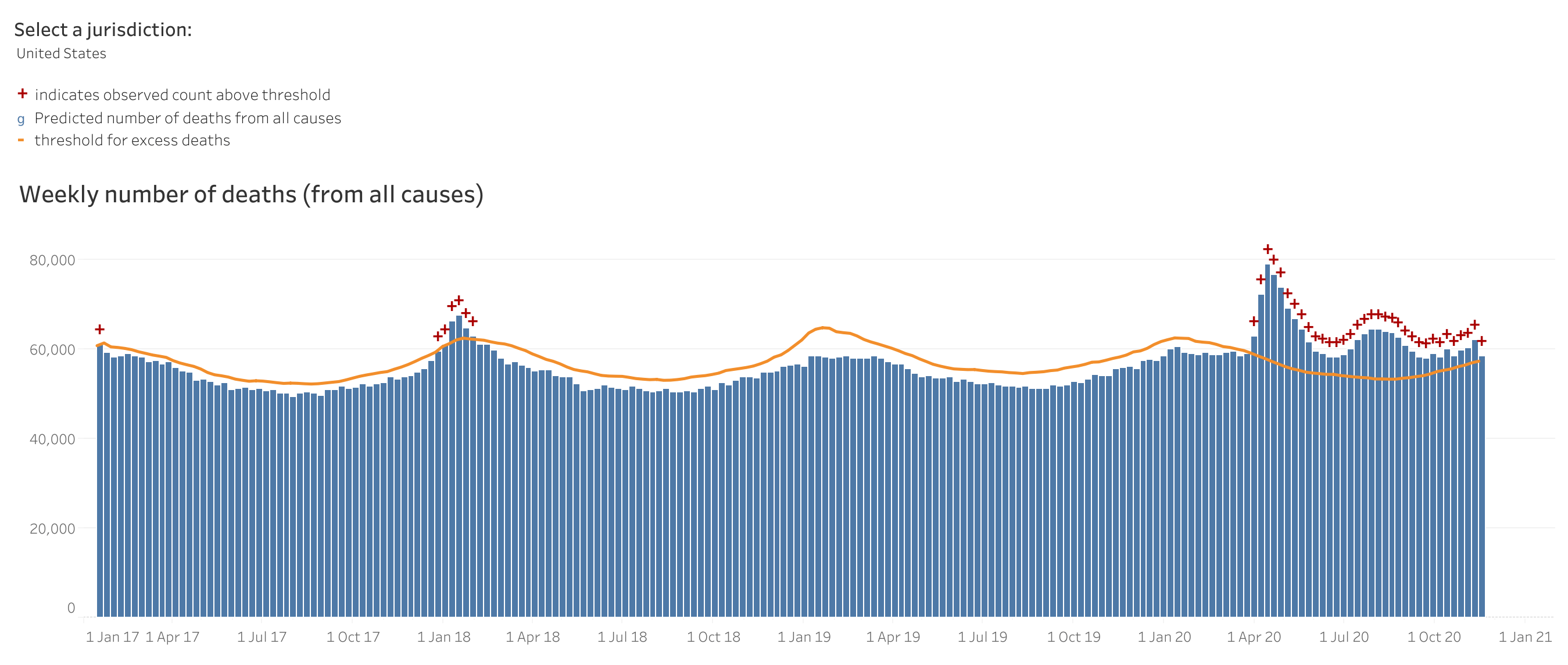
Figure 1. Number of deaths per week from 2017 to 2020. Blue bars above the orange line indicate the presence of excess deaths for 2020 (marked with a red +). Data from the U.S. Centers for Disease Control and Prevention, retrieved on 30 November 2020.
Data from other sources, such as the U.K. Office of National Statistics, also corroborate the U.S. CDC’s overall report on excess deaths in 2020 (Figure 2). Furthermore, despite the article’s claim that “COVID-19 had no effect on the percentage of deaths of older people,” excess deaths can be seen in all age groups, especially the elderly (Figure 3).
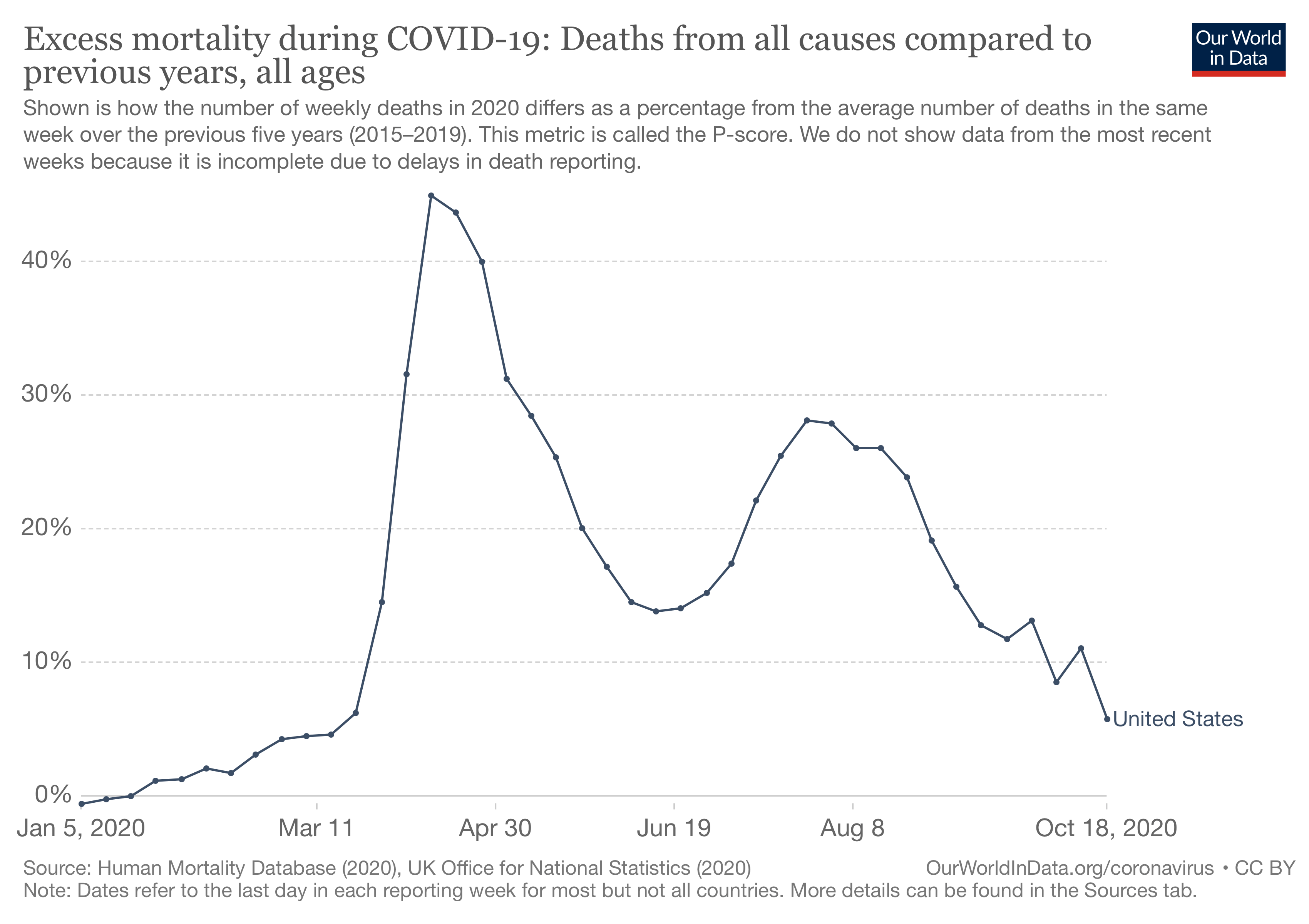
Figure 2. Weekly percentage of excess deaths from all causes in 2020, based on the average number of deaths in the same week over the previous five years (2015-2019). Data gathered from the U.K Office for National Statistics and displayed by Our World in Data, retrieved on 30 November 2020.
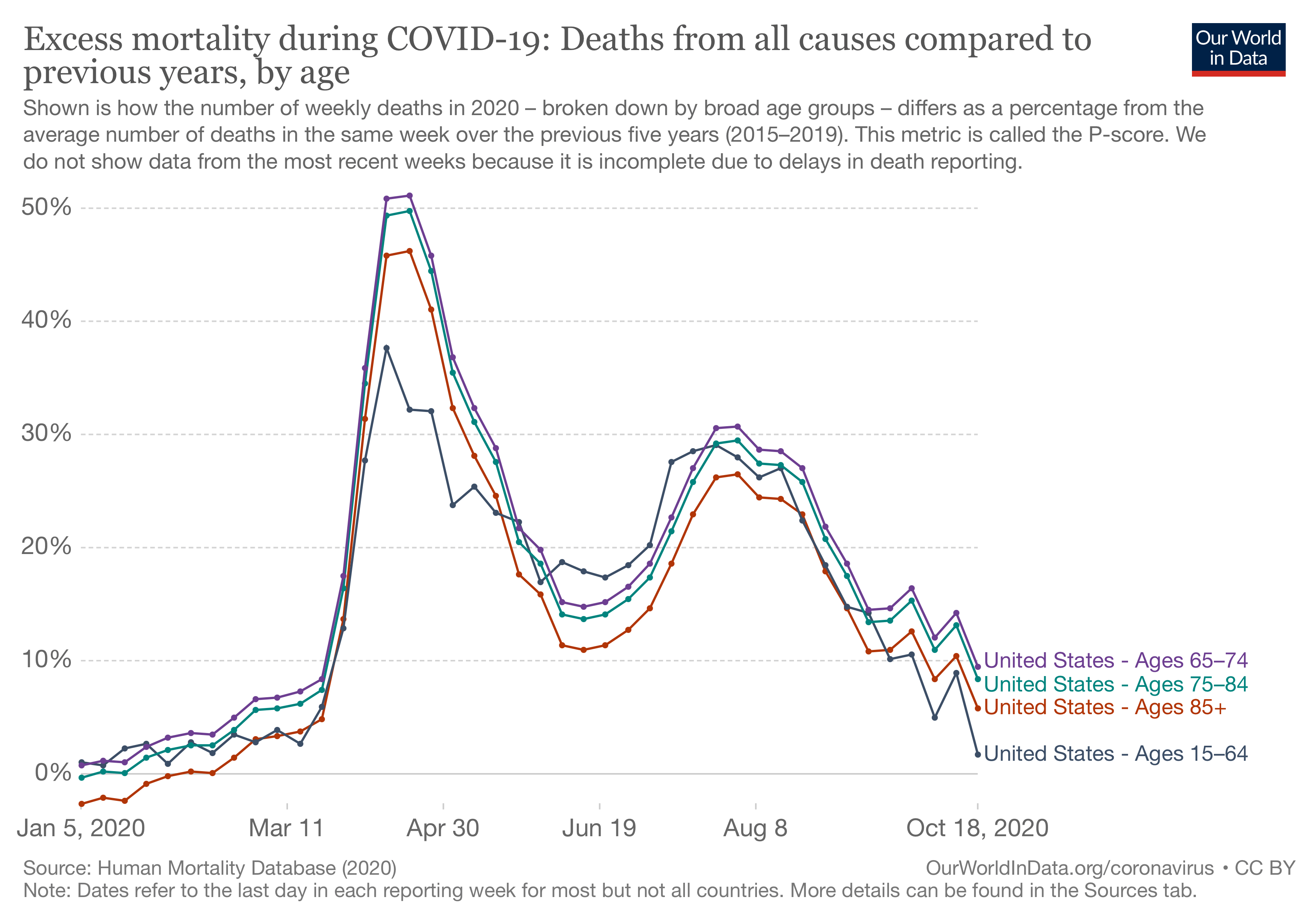
Figure 3. Weekly percentage of excess deaths from all causes in 2020, based on the average number of deaths in the same week over the previous five years (2015-2019), segregated by age group. Data gathered from the U.K Office for National Statistics and displayed by Our World in Data, retrieved on 30 November 2020.
The newsletter article also repeats the false claim that “The CDC classified all deaths that are related to COVID-19 simply as COVID-19 deaths. Even patients dying from other underlying diseases but are infected with COVID-19 count as COVID-19 deaths.” This claim is based on a misunderstanding of how causes of deaths are certified. As explained in an earlier review by Health Feedback, “Deaths are not classified as ‘COVID-19 deaths’ merely because the disease is confirmed or suspected. Instead, the clinical evolution of the patient has to be compatible with the course of the disease to be classified as a death from COVID-19. […] For instance, a patient whose death certificate lists cancer as a cause of death would have presented clinical signs and symptoms consistent with cancer, not with COVID-19. Such a patient would not be reported as a COVID-19 death.”
Finally, although the article was retracted by the News-Letter’s editors, it has not been deleted or censored, as some have claimed. It is still available in full through the News-Letter, as the Editor’s Note itself includes a link to the retracted article. The editors also explained their reasons for the retraction:
“After The News-Letter published this article on Nov. 22, it was brought to our attention that our coverage of Genevieve Briand’s presentation “COVID-19 Deaths: A Look at U.S. Data” has been used to support dangerous inaccuracies that minimize the impact of the pandemic.
We decided on Nov. 26 to retract this article to stop the spread of misinformation, as we noted on social media. However, it is our responsibility as journalists to provide a historical record. We have chosen to take down the article from our website, but it is available here as a PDF.”
Many claims have downplayed the severity of the pandemic by alleging that epidemiological data, such as the number of cases, the number of deaths, and the mortality rate, are inaccurate either by accident or design. Some examples of these inaccurate claims have been fact-checked by Health Feedback here, here, and here.

